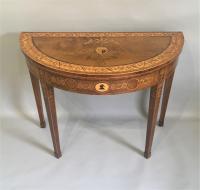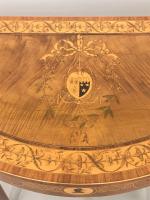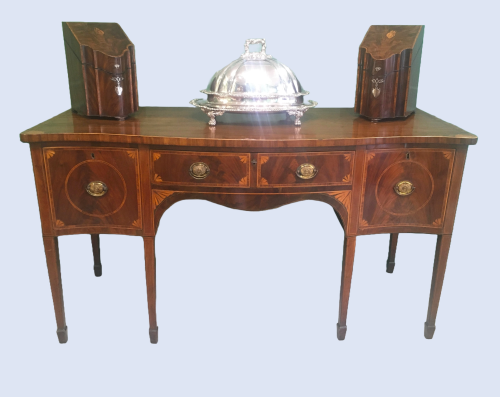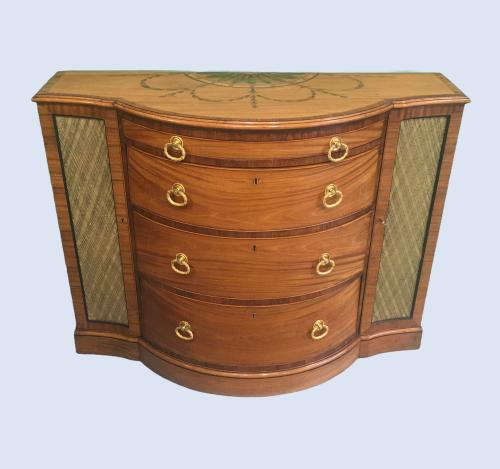
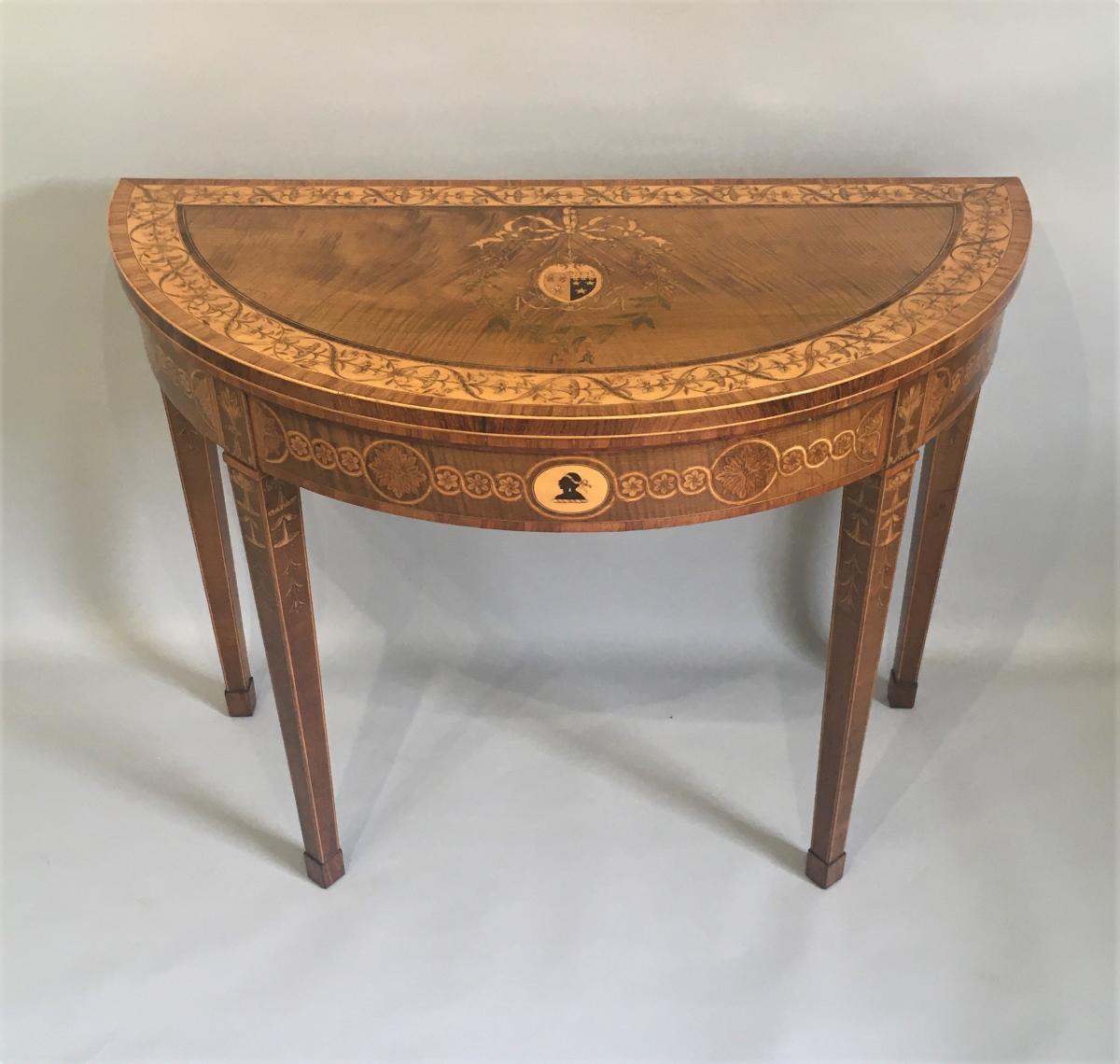
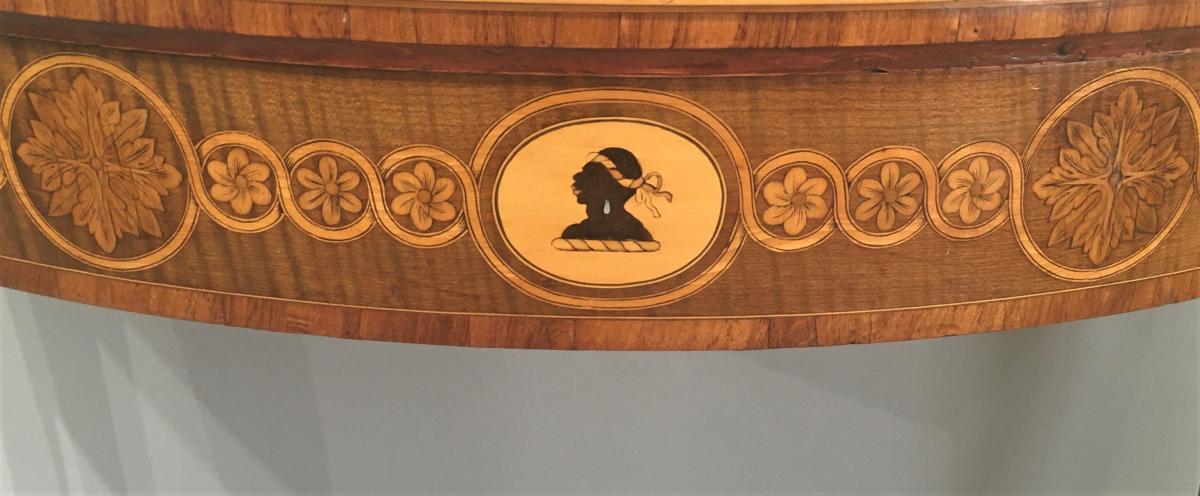
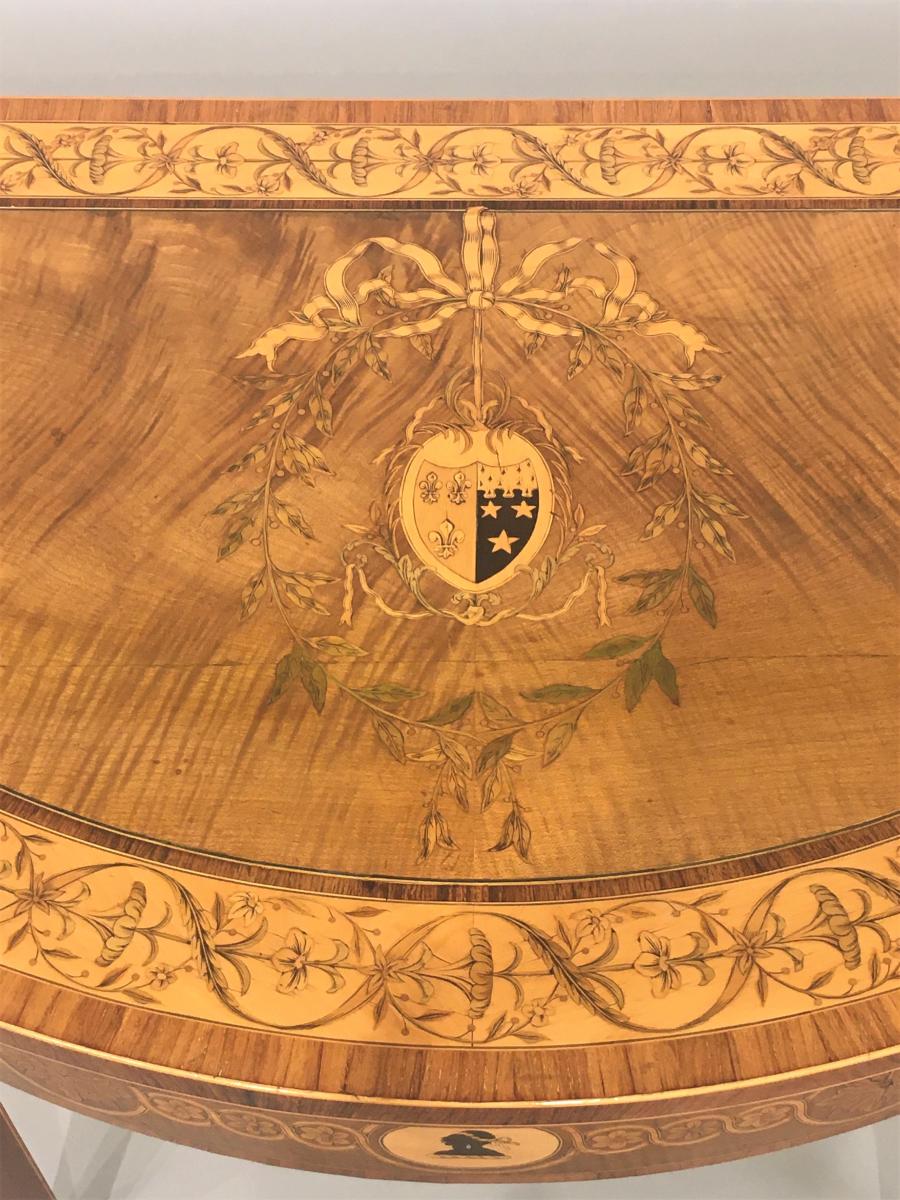
Price
£57500.00This object is eligible for a Certificate of BADA Provenance
The BADA Standard
- Since 1918, BADA has been the leading association for the antiques and fine art trade
- Members are elected for their knowledge, integrity and quality of stock
- Our clients are protected by BADA’s code of conduct
- Our dealers’ membership is reviewed and renewed annually
- Bada.org is a non-profit site: clients deal directly with members and they pay no hidden fees
A George III Sycamore, Tulipwood, Rosewood and Marquetry Card Table Circa 1780-90. In The Manner of Mayhew & Ince.
The fold-over demi lune top inlaid with a central ribbon tied wreath surrounding a coat of arms for William Masterman of Leyton, and within a crossbanded and ribbon-tied foliate garland border. The flowerhead guilloche decorated frieze centred with the family’s blackamoor crest, on bell flower capped square tapering legs.
The arms are those of Masterman impaling Mildred, for William Masterman of Leyton (1759-1845) (a banker of Quaker origins) and his wife Lydia (1756-1819), daughter of Daniel Mildred, a London merchant. He purchased Leyton House from the Bertie family in 1788 which subsequently became Barclay Park.
Their son, John Masterman (1781-1862) became a Member of Parliament for the City of London from 1841 until 1857. He was also a director of the East India Company and head of the bank Masterman, Peters, Mildred and Masterman and Co, based in Lombard Street, London, between 1779-1865.
William Masterman purchased Leyton House in 1788 from Catherine Dorothy Bertie, daughter of Peregrine Bertie, with 20 acres of land. By 1843 Masterman owned about 50 acres in Leyton & the Walthamstow Slip.
His son, John, died in 1862, when the house and about 27 a. were sold to Joseph Gurney Barclay, son of Robert. The Barclays (the bankers) also bought neighbouring fields and small properties, and by 1898, when J. G. Barclay died, the estate, with park and gardens, covered a compact 100 a. In 1898 the estate was auctioned and, with the exception of the house and 2½ a. grounds, sold for development. Leyton House subsequently became High Leigh, Hoddeston Herts, adjacent to Barclay Park.
The antique border pattern relates to those in Designs for Various Ornaments, London 1777, issued by Michelangelo A. Pergolesi, who was one of the decorative artists employed by the architect Robert Adam (d.1792).
The guilloche band can be related in particular to those featured on satinwood commode bookcases inventoried in 1786 at Broadlands, Hampshire, and are likely to have been supplied by the firm Mayhew & Ince. Reference: H. Roberts, “Furniture at Broadlands, Hampshire”, Country Life, 29 January 1981, p.289, fig.7). The flowered ribbon guilloche of the frieze also appears on a commode at Syon House. Similarities may also be drawn to documented Chippendale furniture of this period, including the marquetry Guilloche band on library tables at Harewood House.
William Ince (1737-1804) and John Mayhew (1736-1811) formed an important cabinet making firm in 1759 and produced beautiful furniture that can now be found in museums and stately homes around the world. Their book of furniture designs “The Universal System of Household Furniture” was published in London in 1762. Over the years Ince and Mayhew took many commissions from the nobility including the Duke of Marlborough, The Dowager Duchess of Bedford, The Earl of Coventry and the Earl of Kerry.
Dimensions
Width: 99cms Depth: 49.5cms Height:75.5cmsStock number
A11005The BADA Standard
- Since 1918, BADA has been the leading association for the antiques and fine art trade
- Members are elected for their knowledge, integrity and quality of stock
- Our clients are protected by BADA’s code of conduct
- Our dealers’ membership is reviewed and renewed annually
- Bada.org is a non-profit site: clients deal directly with members and they pay no hidden fees


